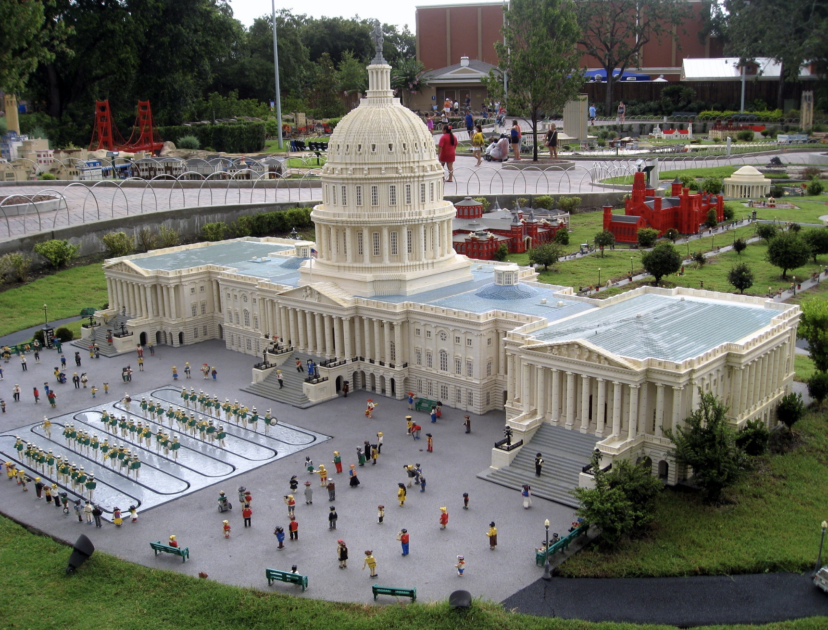Photograph Source: jared422_80 – CC BY 2.0
When Donald Trump was born, the federal government workforce made up 4.5 percent of all nonfarm workers (Figure 1). Today, the federal workforce makes up only 1.5 percent. This is a massive two-thirds reduction from Trump’s birth year. Contrary to the claims of Trump, Elon Musk and others, the real problem with the federal government is that it is too small to properly secure the health, safety, and overall well-being of the people of the United States. Cutting it further will make a bad situation worse.
The tragic crash of an American Airlines jet into a US Army helicopter on January 29 brought the issue and the danger of the understaffing of the federal government to the forefront. According to the Washington Post, two air traffic controllers weredoing the work of four at the time of the incident. The New York Times reports thatnearly all of the nation’s air traffic control centers are understaffed. There are air traffic control facilities in the New York City area — some of the busiest air spaces in the country — that have nearly 40 percent of their positions unfilled. Nick Daniels, the president of the National Air Traffic Controllers Association, stated that two-fifths of the union’s members are working six days a week, 10 hours a day and suffering from stress and fatigue. If Congress doesn’t fix this problem, we shouldn’t be surprised if there are more disasters.
Figure 1

Veterans Health Administration facilities are also suffering from severe staffing shortages. For example, across fiscal year 2024, 86 percent of facilities reported medical officer shortages, and 82 percent reported nursing shortages. These shortages mean that veterans may not receive care in a timely fashion or may receive suboptimal care – which can occur when, for example, nurses are forced to work in units where they lack the needed specialized knowledge, experience, and skills. Congress can support veterans by providing adequate resources.
Congress should also do more to prevent bank failures. The lack of Federal Deposit Insurance Corporation (FDIC) examiners meant that the condition of Signature Bank and Silicon Valley Bank worsened without oversight until both of the banks failed in 2023. The FDIC continues to face a staffing challenge. There are too few people in the FDIC examiner pipeline, and too few with sufficient knowledge and experience to effectively monitor the modern complexities of banking.
One reason why our immigration system is such a mess is because Congress has not provided the resources needed to adequately staff immigration courts. In 2019, there was a backlog of over a million immigration cases, and the backlog tends to grow each year. Congress has greatly increased the funding of US Immigration and Customs Enforcement and the US Customs and Border Protection, but it allows the immigration court system to be underfunded and understaffed. Congress needs to rectify this situation.
Each year, the United States loses many tens of billions of dollars in tax revenue, disproportionately from the wealthiest individuals and corporations, because of understaffing at the Internal Revenue Service (IRS). This revenue could be used to address all of the problems identified above: hiring more air traffic controllers, hiring more doctors and nurses to see to the health of veterans, employing more FDIC bank examiners, employing more immigration judges, or addressing any number of other problems.
Thanks in part to modernization funding provided by the Inflation Reduction Act (IRA), the IRS has finally been able to grow its workforce. This helped to address the strong decline in staffing at the agency from 1992 to 2017. Although there are stillfewer IRS staff today than in the 1990s, Congress has unwisely cut the IRA funding in half. The IRS faces a high rate of attrition from its aging workforce, with taxpayer services (i.e., tax examiners, clerks, and customer service staff) facing rates as high as 36 percent a year. Hiring and retention issues pose a great threat to the IRS’s ability to effectively secure tax revenue. Without adequate staffing, rich tax cheats will escape from detection and average taxpayers will suffer from poor service and errors.
The federal government is not adequately staffed to fully and effectively address the needs of the American people. The examples of the understaffing of the federal government discussed here are not the full story. There are other federal offices in similar situations. Congress should conduct a full investigation of understaffing before considering any cuts to the federal workforce. Several of the major cabinet-level agencies have had significant cuts in staff. Other measures show that Congress has continued to place more demands on the federal workforce without a commensurate increase in staffing. Some may argue that the shift of federal government work to private contractors (who can be more expensive) means that there is no understaffing. But the examples above belie that claim. The contractor workforce is either not in all of the critical areas needed or their numbers are insufficient to address the tasks. Either way, the federal government is too small.
This first appeared on CEPR.

